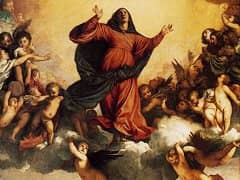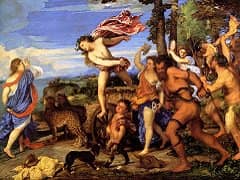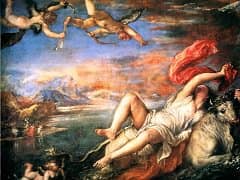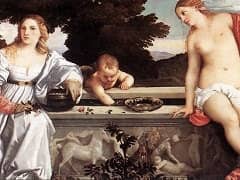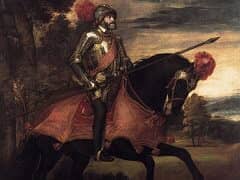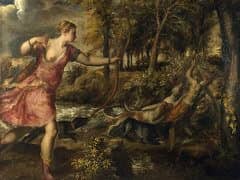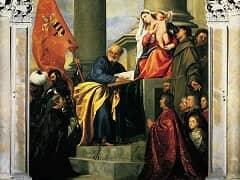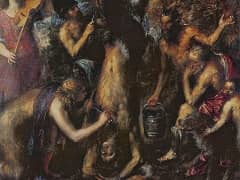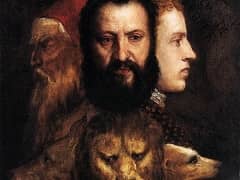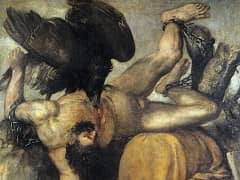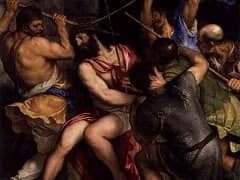Venus and Adonis, 1554 by Titian
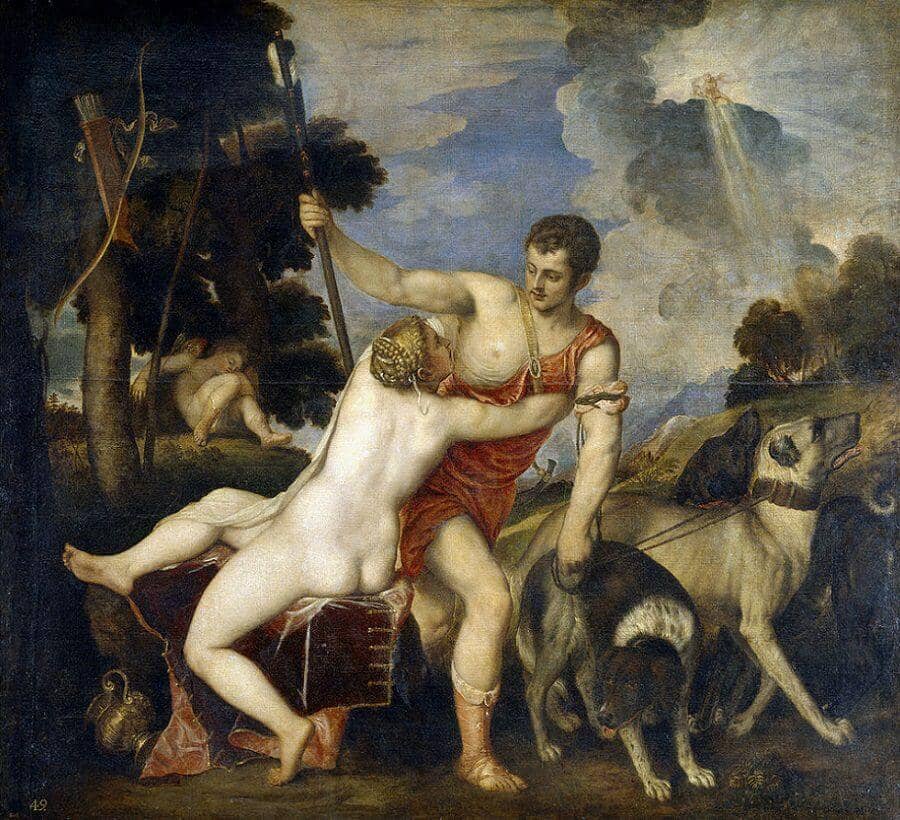
Venus and Adonis, the second of Titian's poesie for Philip II, was in progress in 1553, and in September of 1554 it was sent to the Spanish prince in London, the scene of his marriage
to Mary Tudor; it arrived in a damaged state, about which Philip complained in a letter of December 6. Although areas of the picture have suffered a good deal of repainting - especially
Venus' back - it nonetheless retains much of its original freshness and still makes a striking impression.
Ovid (Metamorphoses, x. 510-739) recounts the tale of Venus' love for Adonis, her warning to him against hunting the wild boar, her departure, his succumbing to the call of the chase, the
hunt of the boar, Adonis' death, Venus' lament, and her transformation of the dead youth into the anemone. To an unusual degree, however, Titian has apparently ignored the classical text,
willfully creating out of its materials an entirely new dramatic situation: the flight of Adonis. As narrated by Ovid, the legend is essentially without such direct conflict; the hunter's
disregard of the goddess's advice occurs in her absence. The immediate juxtaposition of Venus and Adonis at his departure therefore offers dramatic possibilities unavailable in the Ovidian
sequence. In so reinterpreting the story, giving it a new focus, Titian undoubtedly recalled similar subjects on Roman sarcophagi, which preserved an ancient pictorial tradition representing
the departure of Adonis and his subsequent death.
In Titian's painting Adonis sets off resolutely, following I the eager pull of his hounds, his motion drawing the pleading Venus off balance; he pauses for an instant, a moment of hesitation
and doubt, and on their exchanged glances pivots the drama. Within the rich bower of Venus, scene of the past night's love, Cupid still sleeps: love off guard. The moment in the sequence is
defined with further precision by the apparition in the heavens - Aurora herself, whose rays, interrupting the night and love, point the way to Adonis' future, his fated death. A single
image thus contains the full cycle of narrative time - past, present, and future. Moreover, Titian has added a human element of pathos that gives to the myth a new psychological poignancy
and affective power.

